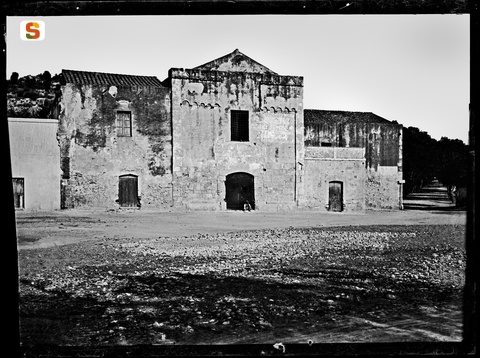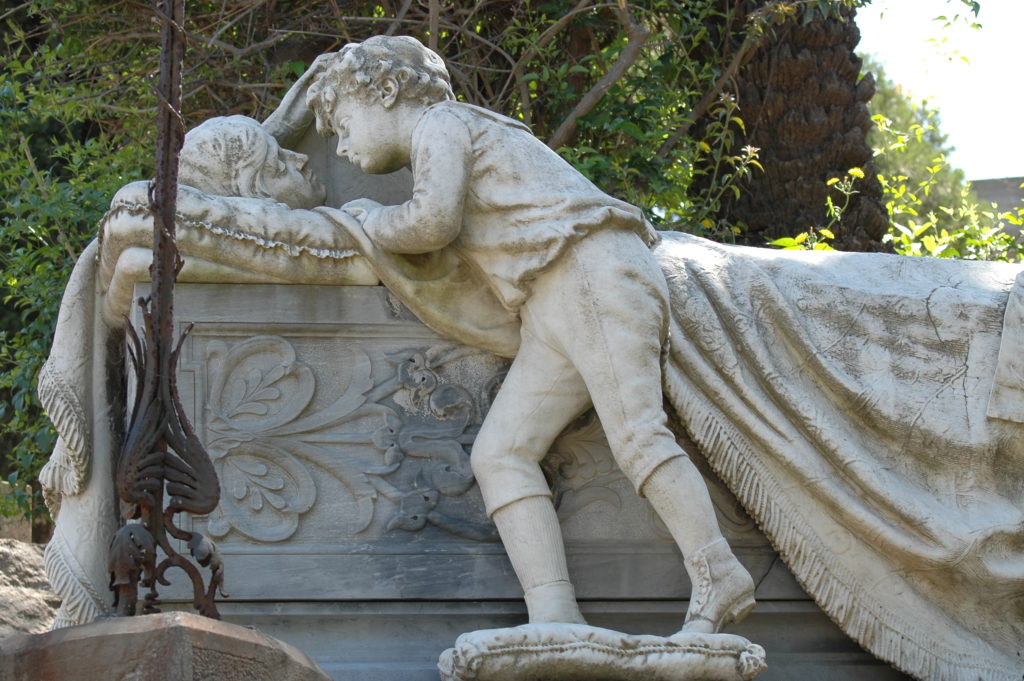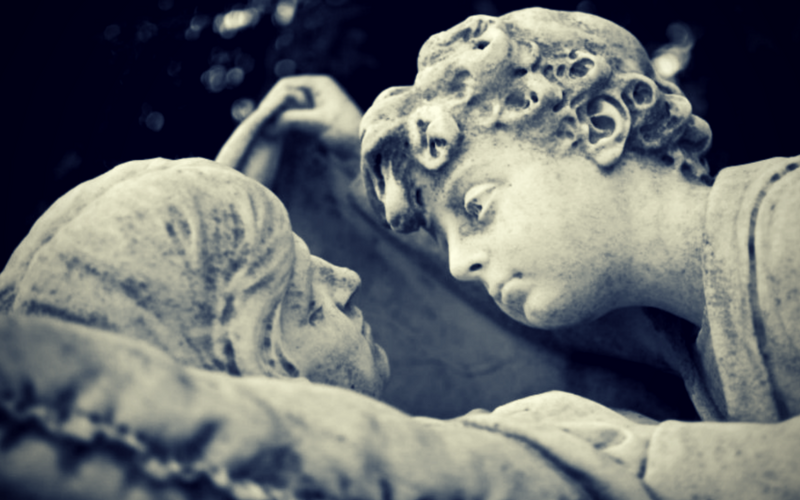Listed by the ASCE (Association of Significant Cemeteries in Europe) among the most significant monumental cemeteries on the continent (November 2011), the Monumental Cemetery of Bonaria in Cagliari, one of the most important historic cemeteries in Sardinia, is a veritable historical and artistic compendium that recounts the evolution of Italian sculpture and architecture between the 19th and 20th centuries. The monuments, chapels and sculptures that adorn its tree-lined avenues are a faithful reflection of Cagliari society in the 19th and 20th centuries, with its cultural changes, fashions and customs of the time.
Covering an area of over 85,000 square metres, the cemetery houses works by artists such as Fadda, Sartorio, Sarrocchi, Ciusa and others, who were active in Cagliari and the peninsula from the second half of the 19th century to the early decades of the 20th century. Their creations reflect an eclectic taste ranging from Neoclassicism to Realism, passing through Symbolism and Art Nouveau, representing an important stop for those who love funerary art and nineteenth-century sculpture.
The choice of location was not random: the cemetery is located in the area of the ancient necropolis of Cagliari , which was used for over a millennium – from the 4th century BC to the 4th century AD – first by the Phoenicians and later expanded by the Carthaginians, Romans and early Christians. The area stretched from the top of Bonaria hill to its slopes, in what is now the area between Via Cimitero, Via Ravenna and Viale Bonaria .

A bit of history
The project was commissioned by the municipal administration and entrusted to the captain of the Military Engineers, Luigi Damiano. The work lasted from 1825 to 1829 and marked a crucial event for the city. As in the rest of Europe, Cagliari was also experiencing the consequences of the Edict of Saint-Cloud of 1804, which prohibited burials within the city walls and required the construction of modern monumental cemeteries in Cagliari.
Until then, the preferred burial sites were churches and convents, where members of the clergy or noble families were laid to rest, often in monumental sarcophagi, mausoleums or private chapels. Next to the churches were plots of land used as cemeteries for clergy, while common graves were reserved for ordinary citizens, generally located near hospitals or shelters. For hygienic reasons, the latter were sealed with quicklime.
In Cagliari, the main mass graves were located in the Marina district – between Via Manno, Via Dettori and Via Barcellona, where the Church of Santo Sepolcro and the former Sant'Antonio Hospital now stand – and along Via Fossario, in the Castello district. With the Napoleonic edict, the ancient practice of locating cemeteries outside the city walls was reinstated.
In the climate of renewal following the Restoration, and following a severe cholera epidemic in 1816, work began on the Bonaria Cemetery, which was officially inaugurated on 1 January 1829 with the burial of Lorenzo Basciu, the first citizen to be welcomed into the new 'city of the dead'.
The first extensions
Just thirty years after its inauguration, the cemetery was already insufficient. It was therefore decided to entrust architect Gaetano Cima with the expansion project, which was followed by further extensions until it reached the top of the hill.
To make room for the new structure, the Romanesque-Pisan church of San Bardilio, located where the main entrance stands today, was sacrificed. The main entrance was built in 1985. Previously, the main entrance was located along Via Cimitero.

Burials continued until 1968, when the municipal administration decided to discontinue the activity. Today, only exhumations or burials related to modifications of chapels or niches purchased before that date are carried out.
Characters and stories
Like any monumental cemetery, Bonaria also houses the remains of prominent figures from 19th- and 20th-century Cagliari: from the famous tenor Giovanni Spano to Canon Giovanni Spano, from painter Giovanni Marghinotti to Mayor Ottone Bacaredda. Strolling along the avenues, you can experience a historical itinerary in Cagliari that recounts over a century of social and cultural transformations.
Alongside the big names, there are also lesser-known but equally fascinating stories: those of Amina and Jenny Nurchis, little Efisino, Felicita Morganti and Caterina Devoto. Ordinary people, overwhelmed by events, by adverse destinies or victims of slander. And then there are the enigmatic characters linked to esoteric disciplines, such as Efisio Marini and Dionigi Scano, who, although not resting in the shade of the cypress trees, have woven their lives into the secrets of Bonaria and its hidden corners.

Strolling through art and memory
Today, walking along the tree-lined avenues, visitors can enjoy a unique experience: an open-air museum where art, memory and history come together. Here you will find masterpieces of art which, despite neglect and the passage of time, remain standing strong, reclaiming their beauty and redemption.
In Bonaria, carved stone comes to life: soft as the cheeks of a child torn too soon from the affection of his loved ones, smooth as the silks of noblewomen, vibrant with emotion in gestures and gazes fixed forever in eternal rest. It is a place where matter becomes soul, and memory is transformed into poetry.
✅ Would you like to visit Bonaria Cemetery?
👉 Join the tour, together with Roberta Carboni!
Bibliographic references:
AA.VV, Bonaria. Il cimitero monumentale di Cagliari
M. Dadea, M. Lastretti, Memoriae. Il Museo cimiteriale di Bonaria a Cagliari
G. Spano, Guida della città e dintorni di Cagliari
Roberta Carboni has been a tour guide for over 10 years. She is an art historian and sommelier, lives in Cagliari and is passionate about Sardinia, which she has loved all her life. This is precisely why she has chosen to share her knowledge through exclusive themed tours. In this way, she helps to promote the island not only to those who do not yet know it, but also to the Sardinians themselves. The tours take place both within Cagliari, in the historic centre and other parts of the city, and in the surrounding area, extending as far as the south and centre of Sardinia.
Join the thematic tours created by Roberta Carboni - Cagliari tour guide...


